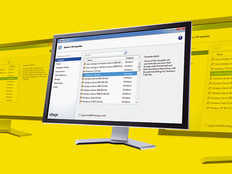L.A. Community College District Implements Data Center Tech to Guarantee Network Services
For Los Angeles Community College District, offering digital and cloud resources for class scheduling, transcripts, grades and other student functions was considered to be “mission critical.” But with everything on the cloud, CIO Jorge Mata says a data center outage could have proved to be a disaster.
“Being on the cloud only exacerbates the problem, because we have nine colleges,” says Mata. “When consolidated to a single cloud solution, if our identity goes offline, all of our colleges go offline.”
So LACCD turned to Array APV Series application delivery controllers (ADCs) for load balancing in its data center. ADCs, like those from Array and Citrix NetScaler, make sure that applications perform optimally and are always available.
“An application delivery controller employs algorithms and policies to determine how inbound application traffic is distributed,” according to a Citrix article.
With load-balancing ADCs in place, if a server goes down, another is able to pick up the slack.
Data Center Tech to Create Anywhere, Anytime Availability
After finding out what LACCD administrators wanted from their IT services — reliability, availability, mobility — Mata says his department decided on the Array ADCs because those needs were met and the Arrays were easy to troubleshoot.
Additionally, Mata says the ADCs helped him build credibility with the LACCD administrators because they were using a more efficient backup solution.
“Having a lot of backups in the event of a disaster might be necessary, but if they aren’t doing anything unless there is a disaster, it is another kind of problem,” says Mata. “Load balancing allows use to spread out tech over multiple areas and use it.”
Load balancing with ADCs also works as a single-campus solution.
For 24/7 availability, Tufts University in Boston also uses a round-robin setup, so that if one server goes down, another picks up the workload.
“We want to ensure that our users never see an outage,” Theresa Regan, Tuft’s director of enterprise infrastructure, tells EdTech. “Business continuity and disaster recovery are priorities; not just IT systems and services, but also communication with students, the administration, faculty and parents.”









